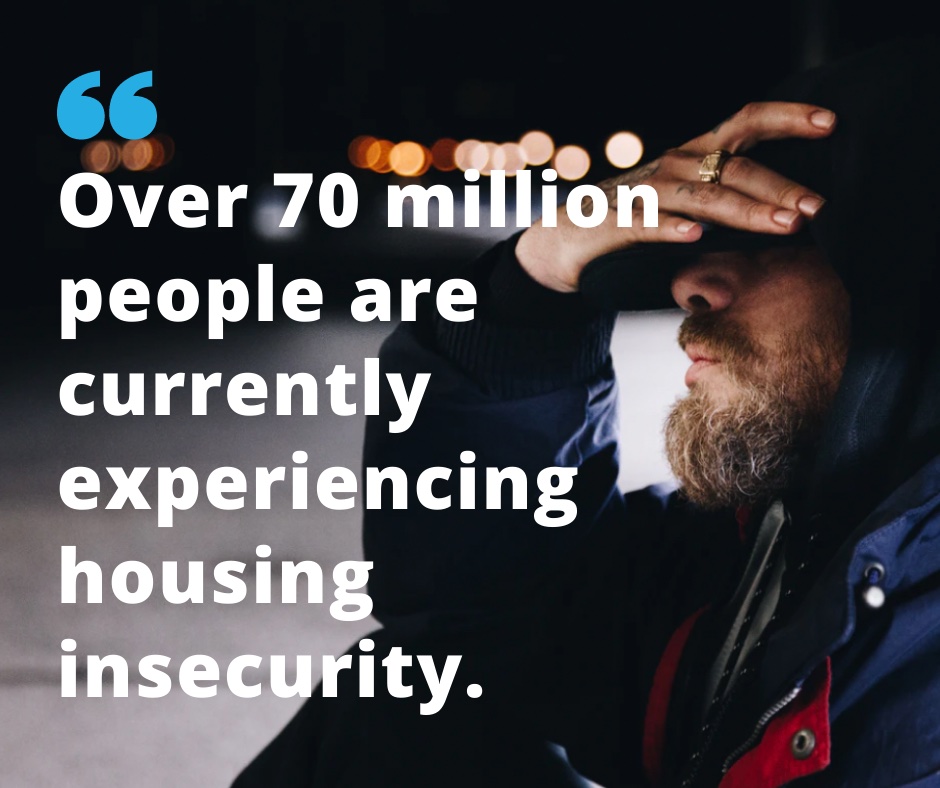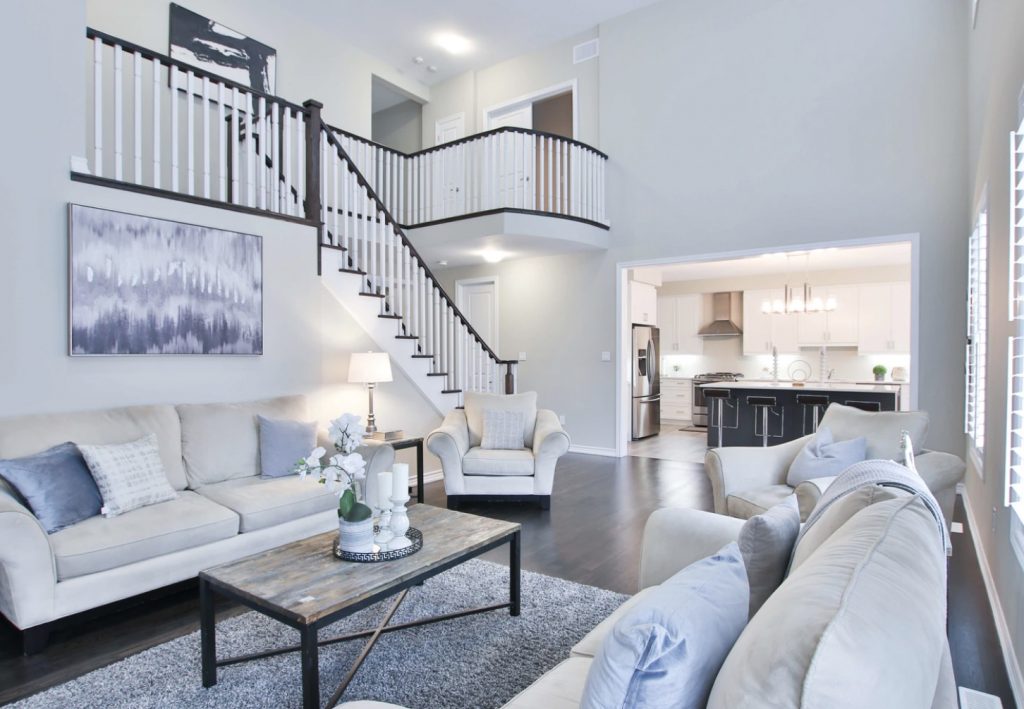Shared housing has emerged as an amazing investment opportunity but not just because of financial benefits. Shared housing is also a huge opportunity for impact investing.
At this stage in your life, it’s likely you’ve worked really hard to build some wealth for yourself, and diversifying your investments is becoming increasingly more important.
But what about impact investing? Is this a new concept for you or something you’ve naturally gravitated toward because of your deep-down desire to make an impact in the lives of others?
There are a lot of different types of impact investment opportunities, but the key difference that sets it apart from other types of investments is that it requires a socialpreneur.
A socialpreneur is an entrepreneur who is deeply concerned and invested in using their talents and resources to impact social justice issues. If you resonate with what a socialpreneur does, then impact investing is likely going to be the right fit for your next investment plan.
If you take a hard look at your current investments, how many of them truly help people beyond supplying a customer with the goods or services you offer? The draw toward an impact investment is that it not only allows you to make money while selling a product, it also solves a real and existing problem. There is a natural draw to this type of investment because you’re not only building wealth, you’re also able to make a difference in the lives of others while you do it.
So now that you’ve identified impact investing as your right next step, what’s next? Believe it or not, one of the best ways to get involved with impact investing is through various types of real estate investments due to high returns and high capacity impact.
Why?
Because housing is one of the greatest basic needs of every individual, and there are many groups of people who are lacking safe and secure housing solutions that meet their needs, investing in shared housing is needed.
Whether you’ve dabbled in the real estate market or not, you’ve probably heard a lot about shared housing and the investment potential it holds.
And the best part about this type of investment is that it’s an excellent opportunity to get involved in impact investing.
But before we get too far into the shared housing opportunity and why it’s one of the best impact investment options, let’s more adequately define impact investing so you can be sure this is the right fit for you and your money.
Impact Investing Defined
Impact investing is an opportunity for socially minded investors. It offers investors the ability to make an impact while also diversifying their investments.
Because it’s about more than just the money. For you, it’s about making a difference – a real impact – in the lives of others. It’s about providing solutions to real problems that people are facing on a daily basis. It’s about meeting the needs – some of them so basic – that many don’t have access to.
And why wouldn’t you take advantage of an opportunity to create real change and add value to the lives of others, with the added bonus of making a lot of money at the same time?
But let’s take an even deeper look at impact investing.
Impact investing is choosing to invest in a company or organization (both nonprofit and for profit businesses) with the intent of having an environmental or social impact, in addition to gaining a financial return.
Common industries that receive impact investments include renewable energy, sustainable agriculture, and basic services including housing, healthcare, and education. If you take a hard look at your current investments, how many of them truly help people beyond supplying a customer with the goods or services you offer?
The draw toward an impact investment is that it not only allows you to make money while selling a product, it also solves a real and existing problem and supports a community. There is a natural draw to this type of investment because you’re not only building wealth, you’re also able to make a difference in the lives of others while you do it.
Through social impact investing, individuals have a chance to design solutions as they see fit to very real problems (ones that often go unaddressed) and directly speak into shaping or changing their own communities for the better.
With that in mind, we’re going to take a closer look at the housing investment opportunities, the various things to be aware of in each one, and ultimately unpack the shared housing opportunity and why it might be your next step toward impact investing.
Different Types of Housing Opportunities for Impact Investing
Many investors gravitate towards real estate because it can make them a lot of money, and housing is a need that each of us have… when demand is high, there’s money to be made.
When it comes to investing in real estate, there are many directions you could take.
Here are a few different types of real estate investment opportunities that potential investors might consider getting involved in:
- Fix and Flip
- Wholesales
- Foreclosures
- Short Sales
- Rental Homes
- Apartments
- Storage Units
- Mobile Homes
If you’re interested in learning more about the various types of real estate investing, as well as doing a deep-dive into impact investing and the residential assisted living opportunity, check out this article.
But when does real estate investing become an impact investment? When it helps to solve the housing need for those who struggle to obtain it on their own.
This is where the shared housing opportunity comes into play.
But first, let’s take a look at the challenge that real estate investors and landlords are facing today. Here are a few to consider:
- Being stuck with eviction moratoriums
- Having enough rental income to pay for their house AND make profit
- Finding and keeping great tenants who care for their house
- Dependable and on-time rent payments
- Knowing they’re in the right place at the right time
Additionally, in big cities like Seattle, for example, there is a lack of affordable rental housing and a small number of homes for purchase. In this city, the median housing price is $790,000 with multiple offers being common.
Market rents do not provide enough cash flow on these homes, but with shared housing, you can solve a secure housing need while also getting double to triple returns.
Shared Housing might be for you if:
- You are a real estate investor needing REAL cash flow
- You are an owner of a short-term rental looking for stability
- You are looking to repurpose a home
- You want to get out of a single family rental and make double or triple income
- Looking for purpose-driven investments
- Securing a prosperous retirement
- Creating abundance for yourself and others
Many investors ask themselves if they can actually do this, and the answer is YES, you can! There are countless resources available for investors like you who are looking to make an impact and we are excited to show you why THIS is the social impact investment opportunity you have been looking for.
We’re going to do a deep-dive into the social impact of a shared housing investment, but you may be wondering just how big of a need and opportunity exists to help others in this way. Here are some statistics you may find helpful.
The Existing Need for Shared Housing
Right now there are over 70 million people experiencing housing insecurity.
The need for recovery homes alone is great. 600 Billion dollars are spent each year on drugs and alcohol in the United States, and 23 million people are in recovery from addiction (7% of the population).
Currently there are only about 2,500 certified recovery homes, as well as approximately 7,100 non-certified recovery homes in the US.
1 in 5 incarcerated people are locked up for a drug offense. These individuals are simply in need of a safe and secure housing solution as they navigate rehabilitation. This provides them stability and support so they can continue to stay well and get back on their feet.
There are 4.7 million veterans with service-related disabilities who are eligible for housing benefits and supported housing. 41% of these individuals had greater than 60% disability. The funding and need for housing solutions for these groups of people is enormous.
Congress is spending billions of dollars to house veterans, people in recovery, and those coming out of the justice system. They have funded with millions of dollars the The National Alliance for Recovery Residences (NARR) to set national standards for recovery homes.
There are 28 states today that subscribe to NARR standards, quickly being followed by many others.
A shared housing business is the opportunity of a lifetime, but having a certified training program to receive your national standards certification is essential. With that, people will be lining up to fill your home or homes.
These standards work for all types of group housing, not just recovery homes.
Shared housing is dignified investing.

What is Shared Housing?
Shared housing is a living space designed to be shared by those unable to live on their own. Examples include (but are not limited to): the elderly, people in recovery, foster children, disabled veterans, and those facing justice issues.
Shared housing allows socially-minded investors the chance to diversify through impact investing and provide housing to those who need it.
Housing is one of the most basic needs that each individual shares, but sadly, there are hundreds of thousands of people who can’t access safe and secure housing solutions for a variety of reasons.
Before we dive into the different types of shared housing, let’s take a look at the need and impact that shared housing provides.

Why is housing an insecurity for some people?
There are many reasons why some have difficulty accessing housing. Consider foster children who haven’t been placed in foster homes and are either aging out of the system or unable to be housed by the state because of capacity.
Many of these children spend a lot of time in social workers’ offices until the system can find a safe, stable place for them to live. There were 673,000 children served in the foster care system in 2019 in the United States, with 122,000 children still awaiting care as of September 2019. (Source: AFCARS data, U.S. Children’s Bureau, Administration for Children, Youth and Families)
There are also many housing needs for aging seniors who require more care than their adult children can provide on their own and need to be in a living scenario that provides 24-hour assistance with their basic needs and daily activities.
Homes are needed to help justice-seeking individuals who are transitioning from prison back into the working force. These individuals are those who typically require assistance and extra time to get back on their feet.
“More than 650,000 ex-offenders are released from prison every year, and studies show that approximately two-thirds will likely be rearrested within three years of release…. What can be done to help people who are released from prison keep from being rearrested? With no job, no money, and no place to live, returnees often find themselves facing the same pressures and temptations that landed them in prison in the first place. Assisting ex-prisoners in finding and keeping employment, identifying transitional housing, and receiving mentoring are three key elements of successful re-entry into our communities.”
US Department of Justice
Source
Students are another group of people who require assistance with housing while they work their way towards a degree and are limited in the amount of hours they are able to work.
Because of this, they often need to share a space with other students just to make ends meet and student housing options allow them to do just that. This is a very common form of shared housing that many people have some familiarity around.
Adults with special needs are another group of people who benefit from shared housing options because it allows them to access safe and secure housing while also having access to the care they may need to live the most fulfilling lives possible.
Shared homes can serve them by increasing their quality of life while also helping them develop skills necessary to thrive.
These are just a handful of scenarios where specific individuals need help accessing their housing needs. The shared housing opportunity allows investors like you to be part of the solution by choosing the model where you feel you can make the most impact.
Here are all of the types of shared housing to consider…
- Clean & Sober Housing
- Senior Housing for Independent Living
- Housing for Autistic Adults
- Justice-seeking homes
- Veteran Housing
- Graduate Housing for Students
- Corporate Housing
- Special Needs Housing for Children
- Special Needs Housing for Adults
- Housing for Foster Kids
How Does Shared Housing Work?
Shared housing, whether clean and sober housing or veteran housing, is a home shared by a group of individuals with a shared interest or need. There are numerous types of shared housing examples, which we will unpack further, but it’s important to note that the need for group homes of various kinds is great, which is where the impact investing opportunity comes into play.
There are lots of ways to get involved in shared housing as an investor, but one of the best ways to get started is by taking advantage of the educational resources made available through companies like The Shared Housing Academy.
The Shared Housing Academy helps investors looking to make an impact while also diversifying in the real estate market by showing them how to locate and identify single family home properties in neighborhoods that are appreciating.
The mission of The Shared Housing Academy is to provide safe and secure housing throughout the country. With the help of like-minded investors, we will ALL become major players in solving the housing insecurity issues facing over 70,000,000 people today. That’s a giant impact – both for you and for the country.
Regardless of your real estate or investing experience, The Shared Housing Academy will provide you with the knowledge you need to get started on the right footing so you can succeed in both producing an ROI and making a meaningful social impact. We can help if you’re a complete beginner, or if you’re looking to diversify your investments and want to add shared housing to your portfolio.
So let’s take a look at some common questions we get from investors and then unpack some of the different types of group homes investors can get involved in.
Why focus on single family homes?
The answer is simple: because you own the home but the state and federal government pay the mortgage, so the opportunity to earn higher returns is much greater in this type of real estate investment.
Interestingly enough, the COVID-19 pandemic did not slow things down in this market. We found that the demand for shared housing during the “stay at home” orders increased significantly.
AirBNB and vacation rentals sit empty as state and local governments want to limit visitors to prevent community spread of the virus.
A single-family home’s value to an investor is the rent that it provides. Market competition can lead to low returns.
At The Shared Housing Academy, we teach you how to use density (two beds per bedroom, in a 4-5 bedroom home, to double or triple your cash flow) to your advantage. This helps you maximize your return, and also helps you to help multiple people.
Not only that, but single family homes are easy to market and sell.
Here are some additional benefits of converting single family homes into shared housing:
- Helps solve homelessness
- Helps to end poverty
- Offers recovery assistance
- Counters inequality
- Improves lives
- Reunites families
- Taps billions of dollars in federal funding for housing programs.

How does one get started in opening a group home?
Group homes serve unrelated individuals, these homes are single-family units. Individuals residing in group homes usually receive some level of personal, mental, emotional, physical, or medical care while living in the facility.
Some group home residents receive medical care, others undergo psychiatric therapy, and some receive personal care assistance with things like hygiene and daily living activities. The services provided in each home can vary, and the care for each individual in the home can also vary. Shared housing helps provide resources to residents that they need in order to be secure and stable.
Even with personal and professional resources available, group home residents have a level of autonomy. Residents of group homes often create long-lasting relationships with those in their home, while maintaining a job, a full course load at school, or undergoing psychiatric care.
How does one meet the requirements for opening a group home?
Requirements for group homes vary from state to state – the stipulations are typically very different, especially depending on the group you plan to serve.
Elderly care and assisted living homes have completely different requirements. It’s important to consider your state guidelines and restrictions for aging and disabilities. Requirements and guidelines can shift between states, so it’s important to make sure you have support in knowing what is required of your particular areas. Aligning yourself with a state or national association can help you navigate the red tape much like the Residential Assisted Living National Association does for their members.
For example, group homes that house individuals diagnosed with autism and down syndrome have a unique set of care requirements issued by the State Department of Developmental Services.
Proper licensing requirements are not difficult to attain.
The federal government provides funding for some facilities that provide shelter for individuals who meet certain criteria.
Some grants provide funding to help develop residents in areas of technology and employee training.
The Community Facilities Grant Program is administered through the Department of Agriculture (USDA).
The program gives money to facilities that are available for public use in rural areas. The amount of the grant depends on the population and the median household income of the area in which the grant will be applied.
There are a variety of different of grants available through various state and federal government agencies for different populations ranging from:
- Battered Women
- Childcare and Development
- Community Facilities and Learning Centers
Getting started is not difficult, but can feel overwhelming for any investor, despite your experience. If you decide to work with The Shared Housing Academy, we will teach you what you need and how to get started effectively, helping you gain an ROI much more quickly than if you were to proceed on your own. Understanding the guidelines for each shared housing type is important because group homeowners have a responsibility to adhere to licensing requirements, inspections, and application processes.
In fact, you can learn the basics of the shared housing opportunity and if it’s right for you when you attend our free webinar, hosted every month.
FREE VIDEO: How to Get Started In Shared Housing
Sign up for our free introduction to Shared Housing and discover how to get involved in decreasing housing insecurity for others while creating financial security for yourself.
If you’re serious about shared housing and are ready to go all in with this impact investment opportunity, then consider attending our next 3 Day Training event, where you’ll receive a deep-dive training on all things shared housing and get the tools you need to start – and succeed – in the shared housing opportunity.
Choose from any of our upcoming training dates from the options below.

What are some of the specifications of shared housing?
As you can probably imagine, shared housing is a unique real estate investment opportunity in that there are state and federal regulations along with many other unique facets to these types of housing.
Because of this, we get a lot of specific questions as it relates to owning and/or operating a shared home and how to convert a single-family home into a group home.
Here are two of the most common questions we are asked:
What is the typical square footage required and do residents share rooms?
The typical square footage of a group home is around 2,000 square feet and most often, residents share rooms. We recommend allotting about 50 square feet per bed. This gives you the most return on your investment and allows you to maximize the amount of people you are serving in your home, while still creating a home-like environment.
Can you charge different rates?
Yes! Rates can range from $7k to $20k or more per month per home because you may be dealing with special needs adults, disabled vets, those with autism, etc. Different rates come into play based on the resident and their specific care needs. There are different skill sets and levels of care needed, and the more specialized the care, the higher rate you can charge.
A Closer Look at Shared Housing: Myth vs. Truth
If you’re reading this article, chances are you’re an entrepreneur (or entrepreneurial minded) who wants to diversify your investments, create a lasting and profitable business that will earn you wealth, but will also allow you to make a life-changing impact in the lives of others.
That’s the opportunity of investing in shared housing. Through shared housing, we’ve figured out a way to end housing insecurity for other people, while creating financial security for ourselves along the way. The aim of the Shared Housing Academy is to teach you how to do just that.
When you think of shared housing, what’s the first thing that comes to mind? Oftentimes, people have a skewed view of what shared housing is based on their college dorm and fraternity or sorority living experience.
We also have potential investors who immediately think of shared housing as a negative environment and are turned off by the opportunity due to an uninformed perspective.
We often hear shared housing or group homes referred to as:
- Drug houses
- Animal houses (often used to describe dorm-style housing)
- Frat houses
- Multi-multi family houses
Because of the misunderstanding and negative connotations that many people have when they think of shared housing, they’re immediately turned off and won’t even consider it as an investing opportunity. This leaves more market space for you to capitalize on.
There is so much untapped potential in the shared housing industry and we want to uncover a myth you may believe about what it means to get involved in group housing as your impact investment.
To give you a better understanding of what you’re getting into, let’s take a look at the TRUTH about the shared housing opportunity…
Our shared housing formula is to offer extremely affordable prices to residents who desire to live in much safer neighborhoods. For the investor or home owner, that gives you higher returns. We do this by approaching a rent-by-the-bed model.
When you look at it from this angle, shared housing actually offers these benefits to its residents:
- Desirable, safe neighborhoods
- Affordable rent
- Appreciative residents
- Opportunities for landlords
- Resources and care opportunities for residents
The Different Types of Shared Housing Opportunities
With different personalities, interests, and backgrounds, the beauty of the shared housing opportunity is that you get to choose which type of impact you want to make. We’re going to uncover some of the ways you can get involved and make a difference with varying groups of people with different needs.
Veterans Housing
There are countless veterans in need of secure and affordable housing. As they age, their options become more limited and the draw to a shared group home with other veterans becomes a really attractive solution to most of them.
Justice-Seeking Homes
There are 29 billion dollars available to house people who have earned an early release from prison because they’ve achieved incredible things during their incarceration.
Many of these individuals have earned a college degree or other form of education while in prison and have risen above a lot of their challenges. Transitional housing allows them the opportunity to get back on their feet as they start earning a living for themselves.
Student Housing
Many students utilize student housing in order to create some stability and ease while they focus on attending school and completing their studies.
Typically, students are not able to work significant hours, and therefore utilize shared housing in order to make financial ends meet until they graduate.
Recovery Housing and Sober Living Housing
For those in recovery from drugs, alcohol, or addiction, recovery housing can be a pivotal step in their journey toward healing, stability, and ultimately regaining their full wellness.
Many people that are in recovery need extra support for financial literacy, technological skills development, and help securing employment. Through the use of recovery housing and sober living, they are able to transition from addiction into a life of wellness, while being supported by caregivers and allies in their recovery.
Housing for Foster Kids
Foster children are a prime example of housing insecurity. After having been displaced from their biological family home, these children need safe and secure housing in order to grow, thrive, and regain a sense of normalcy as they live out their childhood.
Many of these children spend a lot of time in social workers’ offices until the system can find a home in which they can secure a long-term placement.
There were 673,000 children served in the foster care system in 2019 in the United States, with 122,000 children still awaiting care as of September 2019. (Source: AFCARS data, U.S. Children’s Bureau, Administration for Children, Youth and Families)
Residential Assisted Living Homes or Senior Housing for Independent Living
There are 77 million baby boomers, with 4,000 turning 85 on a daily basis. The big-box assisted living facilities are expensive and most of these seniors would like to stay in their own homes but may need additional care.
Additionally, the family members of these seniors want to ensure that their aging parents are receiving quality care that’s accessible and affordable.
Part of the draw to residential assisted living homes is that they’re a home, not a facility. They are smaller, closer-knit communities of people instead of hundreds of people living in a larger facility. This provides more of a family-like environment and more personalized care.
Housing for Autistic Adults / Children and Special Needs Housing
People of all ages with special needs and Autism can benefit from group homes and shared housing. By learning together and supporting each other in a conducive, specialized environment, they can work together with caregivers to learn social skills, group participation activities, and more.
People with special needs can be well-served in a group home, and if they need help with daily living activities like medication management or hygiene, caregivers are available to support them.
Temporary Workers
Temporary workers have had an increased need for shared housing in light of the pandemic. There have been many doctors and nurses that have traveled to different states during the pandemic, in order to be on the front lines, helping to treat sick patients.
When these heroes travel to new cities to serve the hospitalized population, they need safe places to stay. Shared housing and group homes open spaces for them to have a stable residence and a home-like environment to come to after a long shift.
Corporate Housing
Many companies that have relocated employees make use of corporate housing. Whether the assignment is permanent or temporary, employers can utilize corporate housing and shared homes in an effort to provide a stable living environment for employees in transition. If an employee requires extended stays in a different location than the one they call home, corporate housing becomes a necessity.
Shared housing is a way to end housing insecurity, provide stability to those seeking a home, and it can help foster independent living for those in recovery, or those with physical, mental, social, emotional, or learning disabilities.

Learn More About Shared Housing Through This Training
The truth is, your investments define you. If you want to learn how to buy houses for maximum impact, then the shared housing investment opportunity is likely right for you.
You could be a flipper, a single-family home renter, or you could go for maximum impact and invest in shared housing.
Shared housing allows you to be part of ending housing insecurity for others while creating financial security for you.
If you are intrigued about impact investing and want to learn more about the Shared Housing opportunity, you’ll want to take part in the Shared Housing Academy’s 3 Day Virtual Training event for the chance to learn everything you need to get started in this impact investing opportunity.
What to Expect from the 3 Day Shared Housing Training:
There are many questions potential investors have when first coming into this opportunity. Here are some of the frequently asked questions that we address during the 3 Day Shared Housing Training.
Questions like…
- Can I do this anywhere?
- What about HOAs?
- Can I do this if I’m new to real estate investing?
- Can I do it in a home I lease and not even own?
- Can I live in the home, too?
- What happens if the resident does not work out?
- What do the neighbors think?
- How do you work with cities and zoning?
- Do I need staff to take care of them?
In addition to answering all your questions, the 3 day training will help you discover the following:
- How to find the best opportunity for shared housing in your area
- Secrets to starting and using a 501c3 for your shared housing homes
- How to determine if a property is right for shared housing, including if that’s your own home that you’d like to renovate
- How to attract investors and get the funding that you need
- How to find the right team so you can be a “hands off” owner
- How to fill your home quickly with the highest paying clients
- How to get government contracts to pay for your residents
- How to do it all with or without your own capital
- The fast track to opening your first home in three to six months from today
This training is fully virtual, which means you can access the full experience from anywhere. We’ll also take you through virtual tours of group homes so you can get a better understanding of what these homes look like and how they operate. You’ll be able to get a feel for what investing in your own group home could look like.
We will give you the road map on how to manage the house with the right house rules.
Being certified in this industry is essential. We walk you through the logistics of how to get there and why it matters.
Many people come to us wondering how quickly they’ll be able to get their home up and running, and it’s not unheard of that you could be up and running within a few months.
In fact, many people who are working towards certification are able to purchase their homes and get them ready while working towards that certification.
You’ll also learn about rehabbing real estate, which is something many real estate investors are weary of. The truth is, it isn’t hard and we’ll teach you the tricks of doing a cosmetic remodel inexpensively so that you have an asset to secure for your retirement.
If you want to help people and make a difference with your investment, shared housing is your opportunity.
If you like the real estate industry and want to increase your cash flow, shared housing is your opportunity.
If you like the idea of recovery homes, foster care girls/boys homes, corporate housing, temporary workers, veterans, and so many more… shared housing is becoming more and more important and needed in our world. This is your chance to do something about it.
There are 70,000,000 people facing housing insecurities today and shared housing is an opportunity to close the secure housing gap that so many face. We need you to help solve this crisis. The communities around you need your help.
The Shared Housing Academy exists to help investors like you make a lasting impact for those facing housing insecurities. Together, we can make a difference by providing safe, secure homes for those in need.
